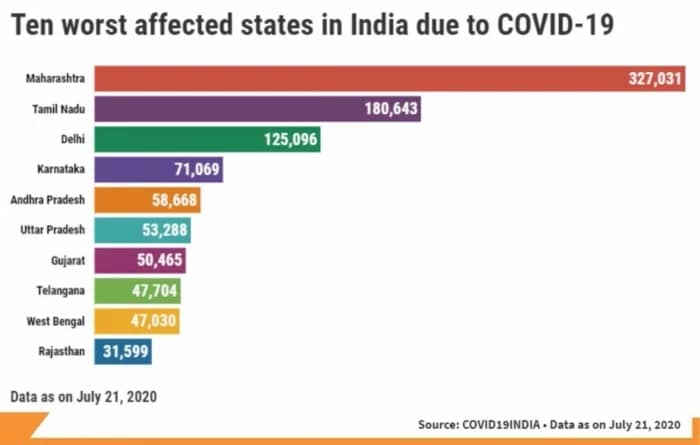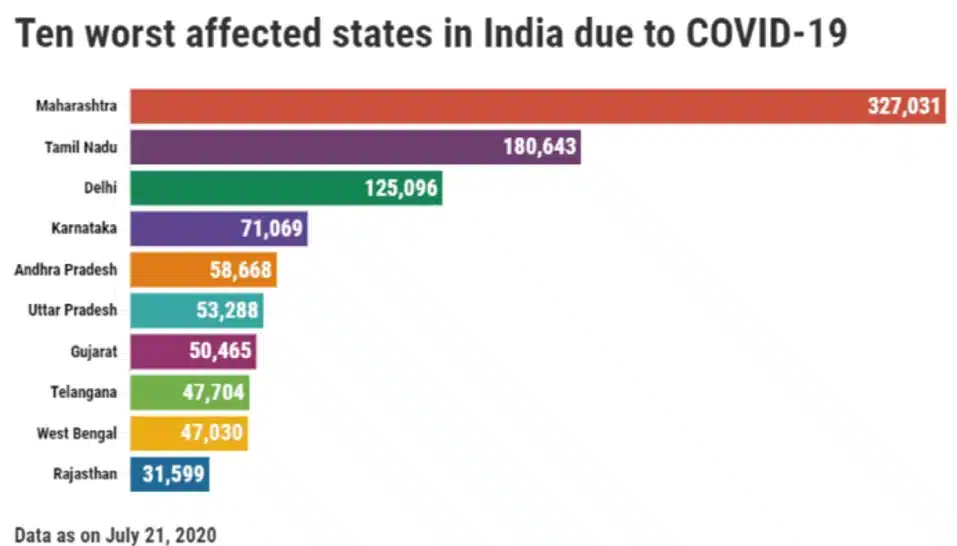On July 16, India reported its millionth case of COVID-19. It took 169 days for the second-most populous country in the world to reach this undesired milestone. The journey, though, is far from over.
India’s battle with COVID-19 began on January 30, 2020. The victim was a student who had returned from Wuhan to his home in Kerala. The state in Southern India emerged as the first hotspot in the country. However, as weeks passed, cases surged in other parts of the country. The nation was under lockdown for over two months, from March 25 to May 31. Despite the restrictions, the country has gone from just over 500 cases on March 25, to more than a million, with an increasing number of fresh cases recorded every day. With 1,194,085 confirmed cases as on July 21, India stands third in the tally of COVID-19, behind the US and Brazil.
More than half of India’s cases are concentrated in three states – Maharashtra, Delhi, and Tamil Nadu. While these three states house 17 percent of the country’s population, they account for 55 percent of the country’s COVID-19 cases.
Maharashtra’s first case of COVID-19 was reported on March 9, 2020. With over a quarter of India’s cases concentrated in one state, Maharashtra has a case count that exceeds even that of China.
Tamil Nadu, the country’s second-worst affected state, has been witnessing a downward trend with the reinstatement of total lockdown in the state capital Chennai.
In India’s national capital, Delhi, aggressive testing has brought down the number of fresh cases, following a surge in cases, reporting a single-day peak of 3947 cases on June 23.
However, the scenario seems to be worsening in other states. Karnataka has reported over 71,069 cases as of July 21, but its active cases count is the third highest in the country. Andhra Pradesh, Uttar Pradesh, and Telangana are witnessing an increase in the number of COVID-19 cases every day.

Though India does boast of an impressive recovery rate of over 63 percent, growth in active cases has not slowed down as the nation struggles to flatten the curve. Signs are equally ominous in other metrics, as India’s testing rate stays the lowest among the five worst-affected countries. It can be argued that with fewer tests conducted, fewer cases emerge, and subsequently, the infection rate stays low, as it has for India.
(With inputs from Tariq Hashmat)

















